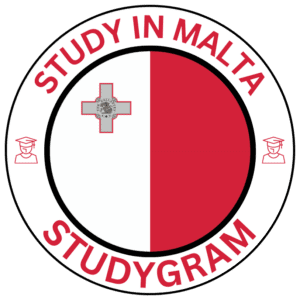
Advancing Sustainable Mobility in Malta: The Role of Infrastructure and University-led Initiatives
Malta’s Western Region is witnessing a concerted effort to promote active travel—such as walking and cycling—as part of broader sustainability and public health strategies. The University of Malta, through its Institute for Climate Change and Sustainable Development (ICCSD), has been at the forefront of these initiatives, collaborating with local authorities to develop infrastructure that encourages safer and more accessible active mobility options. This article explores the recent developments, strategic recommendations, and future plans aimed at transforming Malta into a more walkable and bike-friendly environment.
The Importance of Active Travel and Sustainable Infrastructure in Malta
In recent years, urban planners and environmental experts have emphasized the numerous benefits of active travel. Aside from reducing vehicular emissions and easing traffic congestion, walking and cycling also promote healthier lifestyles among residents. Malta, with its compact urban areas and scenic landscapes, offers an ideal setting for expanding active travel networks.
The University of Malta’s efforts align with national and European objectives to foster sustainable mobility. By investing in improved cycling lanes, pedestrian-friendly pathways, and supportive infrastructure, Malta can significantly enhance residents’ quality of life while addressing climate change commitments.
Mapping and Developing Cycling and Walking Networks in Malta’s Western Region
One of the key achievements of the current project has been the identification and mapping of a dedicated walking and cycling network within Malta’s Western Region. This initiative involved detailed spatial analysis to designate routes that connect key localities, educational institutions, workplaces, and recreational areas.
Physical information totems have been installed across several localities, serving as interactive stations providing essential travel data, including walking and cycling times to various destinations. These totems are equipped with QR codes that link to detailed route maps, promoting awareness and planning among residents and visitors alike.
Enhancing User Experience Through Information To Focusing Opportunities for Growth
This infrastructure not only informs but also encourages continuous use of active travel routes through user-friendly data and real-time updates. As awareness grows, the potential for wider adoption increases, supporting Malta’s broader climate goals and health objectives.
Recommendations for Infrastructure Improvements
The latest report published by the ICCSD, titled “Recommendations for Infrastructural Improvements in Support of Active Mobility,” offers a comprehensive set of strategic suggestions. It emphasizes that targeted infrastructural upgrades can dramatically improve safety, accessibility, and the overall attractiveness of active travel modes.
Key recommendations include:
- Expanding and upgrading cycling lanes to ensure they are continuous, well-marked, and physically separated from vehicular traffic.
- Developing protected pedestrian crossings at major intersections and popular routes to improve safety.
- Implementing traffic calming measures in neighborhoods to create more pedestrian-friendly environments.
- Incorporating wayfinding signs and maps to simplify navigation and encourage exploration.
Future Projects and Community Engagement
In the coming months, the project will see the installation of an additional five information totems, further extending awareness and accessibility. These efforts complement ongoing plans to enhance the regional cycling and walking network.
Moreover, the initiative will culminate in a final active travel workshop, bringing together stakeholders, residents, and urban planners to discuss progress, challenges, and future directions. Community involvement remains essential in ensuring the infrastructure meets local needs and encourages widespread participation.
How the University of Malta Contributes to Active Mobility and Climate Goals
The University of Malta’s role extends beyond research. Its active participation in projects like NAT (Nudging Active Travel) exemplifies its commitment to sustainable development. By integrating academic expertise with practical infrastructure projects, the university helps shape policies that foster smarter, healthier transportation options.
This multi-stakeholder approach aligns with EU directives on sustainable urban mobility and aligns with Malta’s national climate commitments. Increased active travel reduces dependency on fossil-fuel-powered vehicles, decreasing greenhouse gas emissions and improving air quality.
Enhancing the Walkability and Cyclability of Malta: Practical Steps for Residents and Authorities
Residents and local authorities can contribute to these efforts by supporting infrastructural upgrades, using the new routes, and promoting awareness campaigns. Practical steps include:
- Choosing walking or cycling for short trips instead of driving.
- Supporting local initiatives and participating in community consultations.
- Encouraging schools, workplaces, and community centers to adopt active travel practices.
For policymakers, continuous assessment, responsive planning, and adequate funding are vital to sustaining momentum and ensuring that infrastructure upgrades keep pace with urban growth and changing needs.
Conclusion: Building a More Sustainable and Livable Western Region
Malta’s Western Region is on a promising trajectory towards becoming a model for sustainable mobility. The collaborative efforts of the University of Malta, local authorities, and communities are pivotal in creating infrastructure that promotes safe, accessible, and attractive active travel options. As infrastructure projects progress and awareness increases, Malta can significantly improve its environmental footprint and residents’ quality of life.
Interested in learning more about sustainable mobility initiatives? Explore the University of Malta’s research and projects dedicated to climate change and sustainable development. Take the next step in supporting Malta’s journey toward a more active and eco-friendly future.

